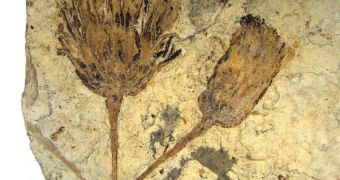A team of researchers managed to identify a possible evolutionary root for the sunflower family, whose origins have until now eluded detection. The fossilized plant was discovered in northern Argentina.
Experts who got a chance to look at the artifact say that it is more than 45 million years old, and that it may very well represent the ancestor of Earth’s most populous plant family, Wired reports.
Botanists say that this family, which is known as Asteraceae, includes several dozens of domesticated plants, and some 23,000 species that have never been domesticate.
The former category also included tarragon, lettuce, daisies and sunflowers, the investigators say. What's weird about this plant family is that, even if Asteraceae is basically everywhere, very few fossils of it have endured.
Granted, it's a lot more difficult for natural factors to form fossils of plants than fossils of animals. By definition, the process through which fossils appear is one subjected to chance.
Pure luck or catastrophic events alone can ensure that the body of an animals is preserver in ash or marsh mud. This seldom happens for animals, but it happens even rarer for plants.
Thus far, most remnants from this plant family included just a few pollen grains. Researchers have now found a complete plants, and this is what makes the new discovery so important.
“Where the sunflower family first evolved and how it spread […] is not well understood,” explains Tod Stuessy, an evolutionary botanist at the University of Vienna, in Austria.
He is also the author of a commentary of the new work, which is published next to the actual study, in the September 24 issue of the esteemed journal Science.
The fossil was found by Viviana Barreda, who is a paleobiologist at the Argentina Museum of Natural History. The discovery confirms an old theory on the phylogenetic tree for Asteraceae.
The idea placed the origins of this family in a common ancestor that Asteracea shared with Goodeniaceae and Calyceraceae, two other major plant families.
The common ancestor was believed to have evolved in Antarctica, in a time when the Southern Continent was a tropical paradise.
The fact that new fossil was found in Argentina confirms that. The idea is further confirmed by the age of the specimen.
According to researchers, the South American branch of the common ancestor split into Calyceraceae and Asteraceae between 56 and 23 million years ago.

 14 DAY TRIAL //
14 DAY TRIAL //